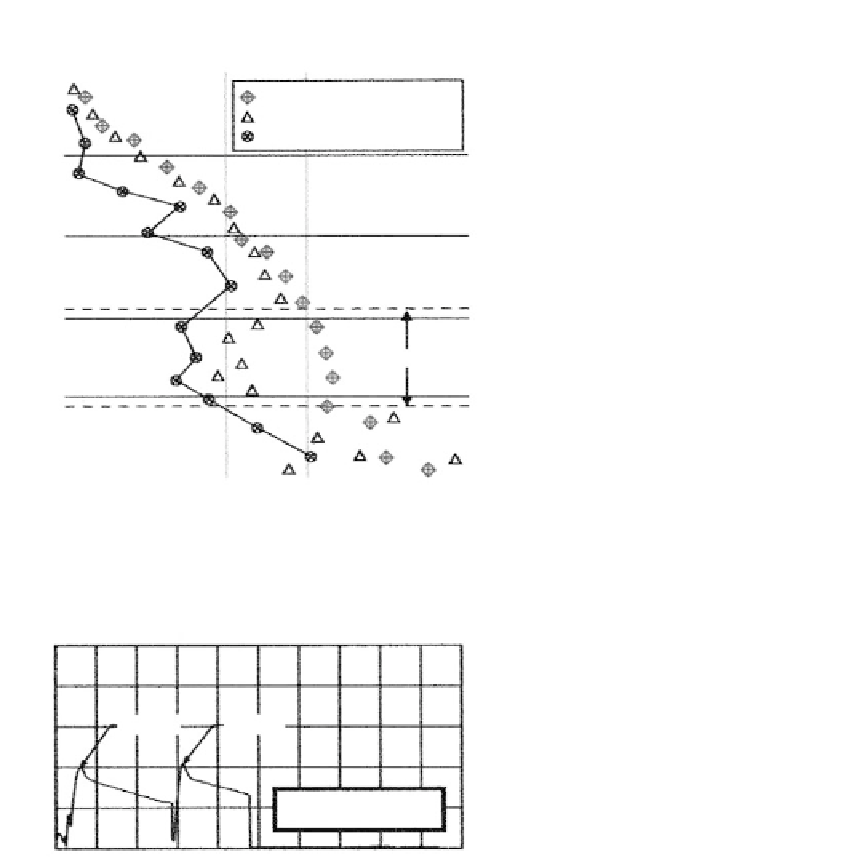Environmental Engineering Reference
In-Depth Information
Undrained shear strength (ksf)
0
1.0
2.0
3.0
4.0
0
Remote vane data
3.0-in. pushed data
2.25-in. driven data
100
200
300
Gassy
400
500
Deepwater site
Time (sec.)
0
200
400
600
800
1000
2.5
2.0
S
u
=1.00
S
u
=1.04
1.5
1.0
FIGURE 2.47
Remote vane results compared with lab test
results from push samples. (Courtesy of
Fugro.)
Blade : Small
Depth: 33.0 & 35.0 (ft)
0.5
0
Boring Inclination
Vertical borings
are normal in soil formations and most rock conditions during
investigation.
●
Angle borings
are often drilled in rock masses to explore for joints, faults, or solu-
tion cavities, or for the installation of anchors in soil or rock.
●
Horizontal borings
are drilled to explore for tunnels or the installation of rock bolts,
instrumentation, or horizontal drains. Maintaining a straight horizontal boring is
extremely difficult. At the start of the boring, gravity tends to pull the drill bit
downward; then as penetration increases, gravity acts on the heavy drill string and
the bit may tend to drift upward. Rock quality variations will also cause inclination
changes. New technology employs directional drilling (Civil Engineering, 1998).
●
Standard Drilling Machines and Tools
There are a large number of hole-making methods and drilling machines. A summary is
given in
Table 2.13
in terms of application, method, advantages, and limitations. The basic


